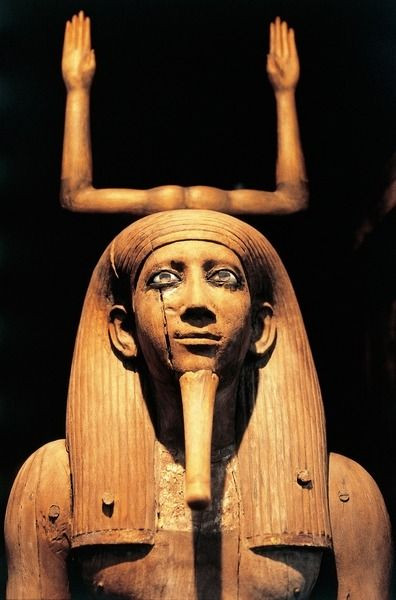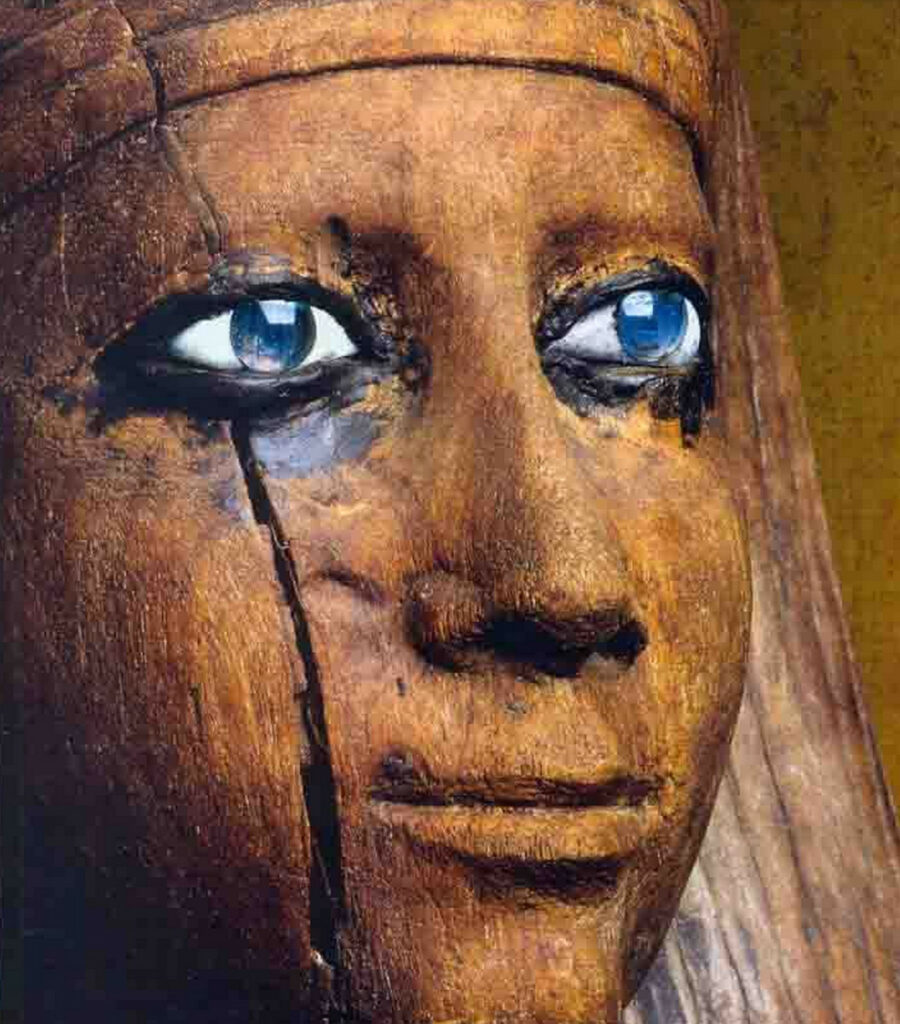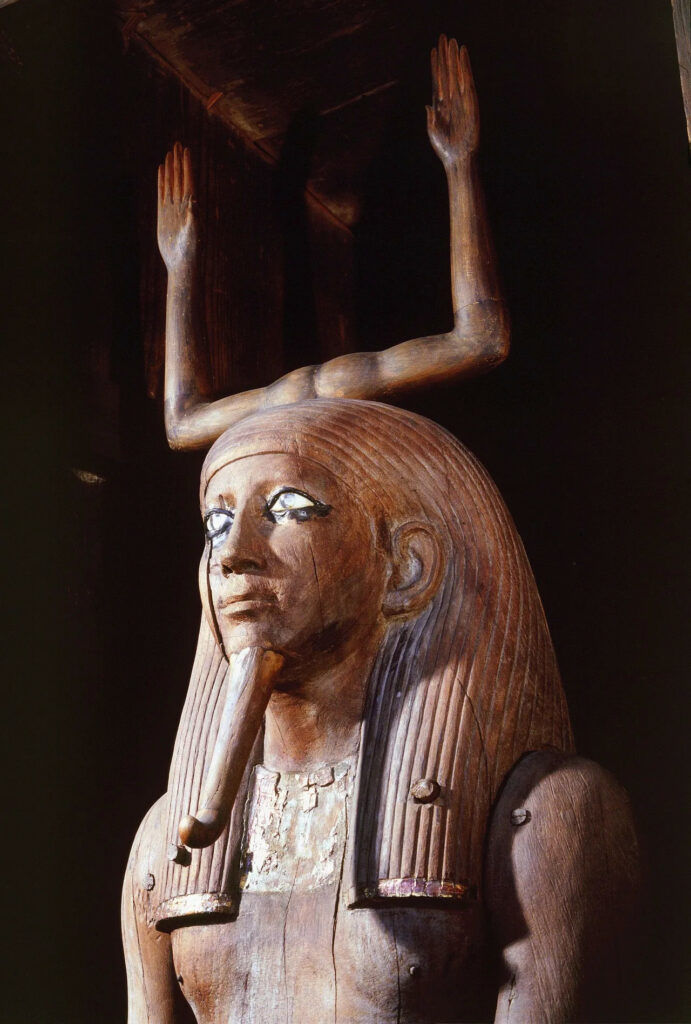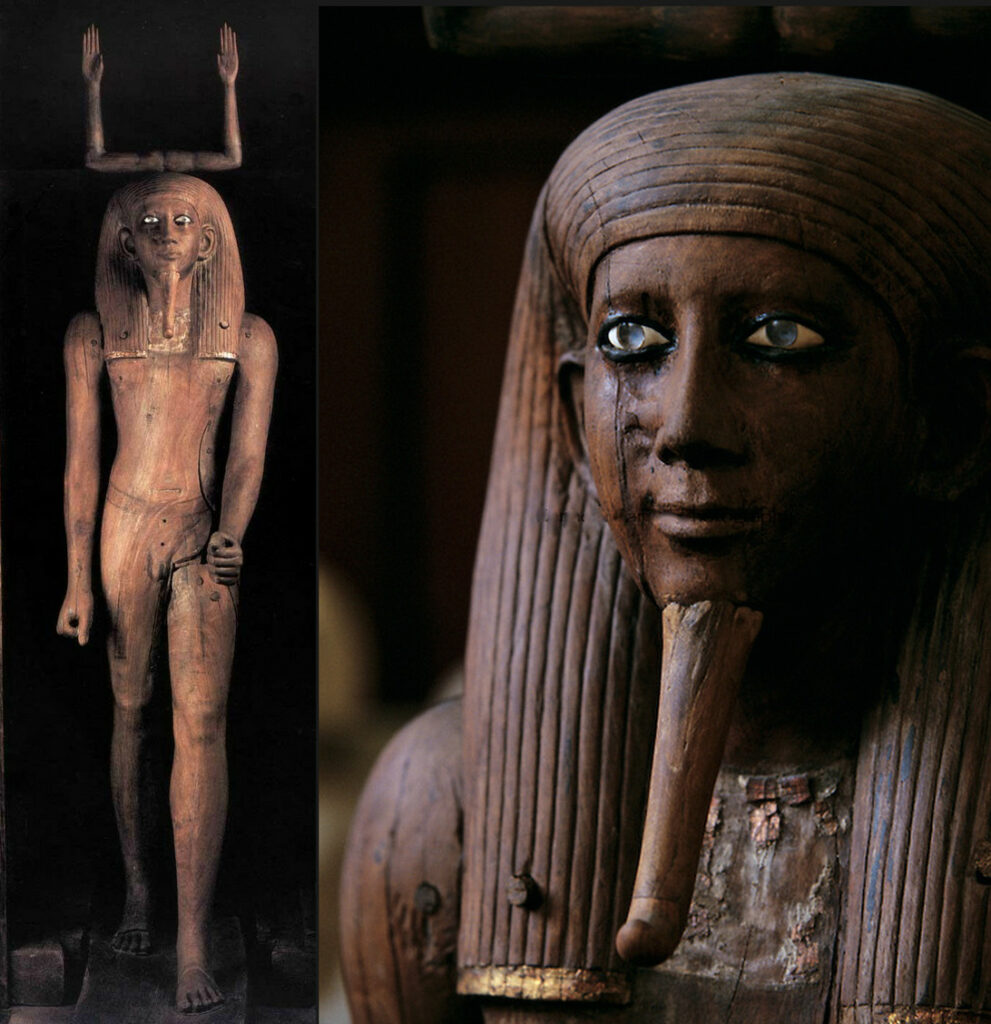The Discovery

In 1894, a team of excavators led by the archaeologist Jacques de Morgan made a remarkable discovery at the Pyramid Complex of Amenemhat III in Dahshur, Egypt. Within the tomb of King Hor Awibre, or Hor I, they unearthed a magnificent wooden Ka statue adorned with rock-crystal quartz eyes, a true masterpiece that had withstood the test of time.
The Significance of the Ka Statue
The Ka and its Representation

The Ka, or guardian spirit, played a crucial role in ancient Egyptian belief systems. It was believed that for a person’s spirit to survive after death, their Ka had to be preserved within a statue. These Ka statues, carved from wood or stone and often painted to resemble the owner, were intended to reinforce the spiritual connection and ensure the preservation of the individual’s memory for eternity.
The Intricate Craftsmanship

The Ka statue of King Hor I is a testament to the exceptional craftsmanship of ancient Egyptian artisans. Standing at 135 cm (170 cm with the base and Ka sign), the wooden structure is remarkably well-preserved. The king is depicted wearing a three-part long wig, leaving the ears exposed, and adorned with a long, curved divine beard. Traces on the wood suggest that the statue was once adorned with a belt and kilt, adding to its regal appearance.
The Ritual and Placement
The Mortuary Chapel

Many Ka statues were placed within purpose-built mortuary chapels or niches, often covered with inscriptions. This particular statue was found within an accompanying naos, or shrine, which was once partly adorned with gold foil and hieroglyphic inscriptions bearing the king’s names.
The Eternal Connection
The Ka statue was a physical manifestation of the ancient Egyptians’ belief in the various aspects that made up a person – the physical body, the name, the ba (personality or soul), and the šwt (shadow). Among these, the Ka, or life-force, was considered the most important, and the statue evidently represents King Hor as his Ka, ensuring his eternal existence.

Now housed in the Egyptian Museum in Cairo, this remarkable Ka statue serves as a window into the rich cultural and spiritual beliefs of ancient Egypt, reminding us of the enduring legacy of this ancient civilization.

